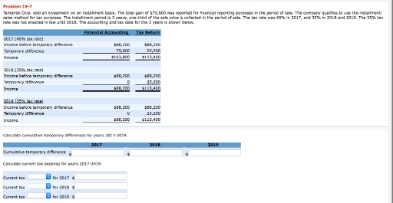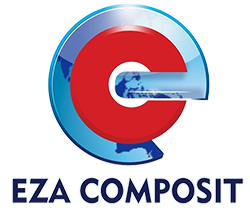Why is horizontal and vertical analysis important in analyzing the balance sheet and the income statement?
Two companies with vastly different financial profiles (e.g., a $10 million company and a $10 billion dollar international corporation) can still be meaningfully compared by reducing their financials to percentages. Today’s economy is undergoing constant and significant change thanks to digital disruption, complex globe-spanning phenomena like climate change and the COVID-19 pandemic, and the ever-expanding impact (and importance) of Big Data. To compete effectively and strategically, it’s important for businesses of all sizes to make use of the tools at their disposal. Both horizontal and vertical analysis each have a role to play in a company’s financial management, business process management, and overall strategic and competitive planning. The horizontal and vertical analysis are other components of financial statement analysis aside from the normal profitability and liquidity ratios….
- If the company had an expected cash balance of 40% of total assets, they would be exceeding expectations.
- By exploring coverage ratios, interest coverage ratio, and cash flow-to-debt ratio, horizontal analysis can establish whether sufficient liquidity can service a company.
- Sometimes, financial statements are prepared in this way by the provider but often FP&A analysts will utilize their own basis depending on what information they are trying to understand.
- Regardless, accounting changes and one-off events can be used to correct such an anomaly and enhance horizontal analysis accuracy.
- Once the ratios are calculated, they can be easily compared with ratios in similar companies for benchmarking purpose.
Generally accepted accounting principles (GAAP) are based on the consistency and comparability of financial statements. Using consistent accounting principles like GAAP ensures consistency and the ability to accurately review a company’s financial statements over time. Comparability is the ability to review two or more different companies’ financials as a benchmarking exercise.
Methods for Financial Statement Analysis
This may not be enough of a difference to make a change, but if they notice this deviates from industry standards, they may need to make adjustments, such as reducing the amount of cash on hand to reinvest in the business. The figure below shows the common-size calculations on the comparative income statements and comparative balance sheets for Mistborn Trading. The highlighted part of the figure shows the number used as the base to create the common-sizing.
- Last, a horizontal analysis can encompass calculating percentage changes from one period to the next.
- Integrating cash flow forecasts with real-time data and up-to-date budgets is a powerful tool that makes forecasting cash easier, more efficient, and shifts the focus to cash analytics.
- In this example, the business’s variable expenses have trended downward over the three-year period.
- In this FAQ we will discuss what vertical analysis is, how it relates to horizontal analysis, and provide a simple example of how to apply it.
In this analysis, the line of items is compared in comparative financial statements or ratios over the reporting periods, so as to record the overall rise or fall in the company’s performance and profitability. The value of horizontal analysis enables analysts to assess the company’s past performance and current financial position or growth and project the useful insights gained into the future. However, when using the analysis technique, the comparison (current) period can be made to appear uncommonly bad or good. It depends on the choice of the base year and the chosen accounting periods on which the analysis starts. Vertical analysis shows a comparison of a line item within a statement to another line item within that same statement. For example, a business may compare cash to total assets in the current year.
Difference Between Polymers and Metals
All of the amounts on the balance sheets and the income statements will be expressed as a percentage of the base year amounts. The amounts from the most recent years will be divided by the base year amounts. For instance, if a most recent year amount was three times as large as the base year, the most recent year will be presented as 300. If the previous year’s amount was twice the amount of the base year, it will be presented as 200. Seeing the horizontal analysis of every item allows you to more easily see the trends.

The year of comparison for horizontal analysis is analysed for dollar and percent changes against the base year. When performing vertical analysis each of the primary statements that make up the financial statements is typically viewed exclusive of the other. This means it is atypical to compare line items on the income statement as a percentage of gross income. That being said, there are some times where cross comparing ratios of certain accounts would make sense, liabilities expressed as a percentage of net income for example. Also known as trend analysis, this method is used to analyze financial trends that occur across multiple accounting periods over time—usually by the quarter or year. It’s often used when analyzing the income statement, balance sheet, and cash flow statement.
Horizontal Analysis in Reporting Standards
However, in the case of the income statement, the same may be indicated as a percentage of gross sales, while in cash flow statement, the cash inflows and outflows are denoted as a proportion of total cash inflow. If a company’s inventory is $100,000 and its total assets are $400,000 the inventory will be expressed as 25% ($100,000 divided by $400,000). Horizontal And Vertical Analysis If cash is $8,000 then it will be presented as 2%($8,000 divided by $400,000). If the accounts payable are $88,000 they will be restated as 22% ($88,000 divided by $400,000). If owner’s equity is $240,000 it will be shown as 60% ($240,000 divided by $400,000). The vertical analysis of the balance sheet will result in a common-size balance sheet.
- This would mean that the ratio of years 1, 2, and 3 to year one would be 100%, 97%, and 94%, respectively.
- Google is in a good phase of business at the moment, and will likely continue to expand and announce new products and tech as they normally do.
- Further analysis via horizontal analysis will likely be required to unlock those insights, and make use of them in a strategic way.
- Horizontal analysis (also known as trend analysis) looks at trends over time on various financial statement line items.
- It is typical for an income statement to use revenue (or sales) as the comparison line item.
Coverage ratios, like the cash flow-to-debt ratio and the interest coverage ratio, can reveal how well a company can service its debt through sufficient liquidity and whether that ability is increasing or decreasing. Horizontal analysis also makes it easier to compare growth rates and profitability among multiple companies in the same industry. Vertical analysis, horizontal analysis and financial ratios https://kelleysbookkeeping.com/20-tax-deductions-ecommerce-businesses-need-to/ are part of financial statement analysis. Analysts are often concerned with a business’s performance over time and as a result, have a need to perform analysis over a period of time. After squaring the differences and adding them up, then dividing by the total number of items, we find that the variance is $5,633,400. Taking the square root of that, we get the standard deviation, which is $750,600.
Google is in a good phase of business at the moment, and will likely continue to expand and announce new products and tech as they normally do. This causes difficulties since it’s hard to compare companies of different sizes. Datarails’ FP&A software replaces spreadsheets with real-time data and integrates fragmented workbooks and data sources into one centralized location. This allows users to work in the comfort of Microsoft Excel with the support of a much more sophisticated data management system at their disposal.
Which is vertical analysis?
What Is Vertical Analysis? Vertical analysis is a method of financial statement analysis in which each line item is listed as a percentage of a base figure within the statement.
On a balance sheet this might mean showing a percentage of either total assets, liabilities, or equity. The key difference between horizontal and vertical analysis depends on the way financial information in statements are extracted for decision making. Horizontal analysis compares financial information over time by adopting a line by line method. Vertical analysis is focused on conducting comparisons of ratios calculated using financial information. Both these methods are conducted using the same financial statements and both are equally important to make decisions that affect the company on an informed basis.
Key Differences Between Horizontal and Vertical Analysis
On the other hand, comparability constraint dictates that a company’s financial statements and other documentation be such that they can be evaluated against other similar companies within the same industry. Horizontal analysis is used to improve and enhance these constraints during financial reporting. Consistency constraint here means that the same accounting methods and principles must be used each year since they remain constant over the years. Notice that the column presenting the ratio of each line item to gross sales is to the right of the actual values. Sometimes, financial statements are prepared in this way by the provider but often FP&A analysts will utilize their own basis depending on what information they are trying to understand. Vertical analysis is the comparison of financial statements by representing each line item on the statement as a percentage of another line item.
IgA deficiency destabilizes homeostasis toward intestinal microbes … – Science
IgA deficiency destabilizes homeostasis toward intestinal microbes ….
Posted: Fri, 26 May 2023 18:02:14 GMT [source]
For example, a company’s management may establish that the robust growth of revenues or the decline of the cost of goods sold as the cause for rising earnings per share. By exploring coverage ratios, interest coverage ratio, and cash flow-to-debt ratio, horizontal analysis can establish whether sufficient liquidity can service a company. Horizontal analysis can also be used to compare growth rates and profitability over a specific period across firms in the same industry. This means Mistborn Trading saw an increase of $20,000 in revenue in the current year as compared to the prior year, which was a 20% increase.
You can choose whatever interval (month-over-month, year-over-year, etc.), but each iterative financial statement should be equal distance away regarding when it was issued compared to other bits of financial information. Every finance department knows how tedious building a budget and forecast can be. Integrating cash flow forecasts with real-time data and up-to-date budgets is a powerful tool that makes forecasting cash easier, more efficient, and shifts the focus to cash analytics.


Leave a Reply
Want to join the discussion?Feel free to contribute!